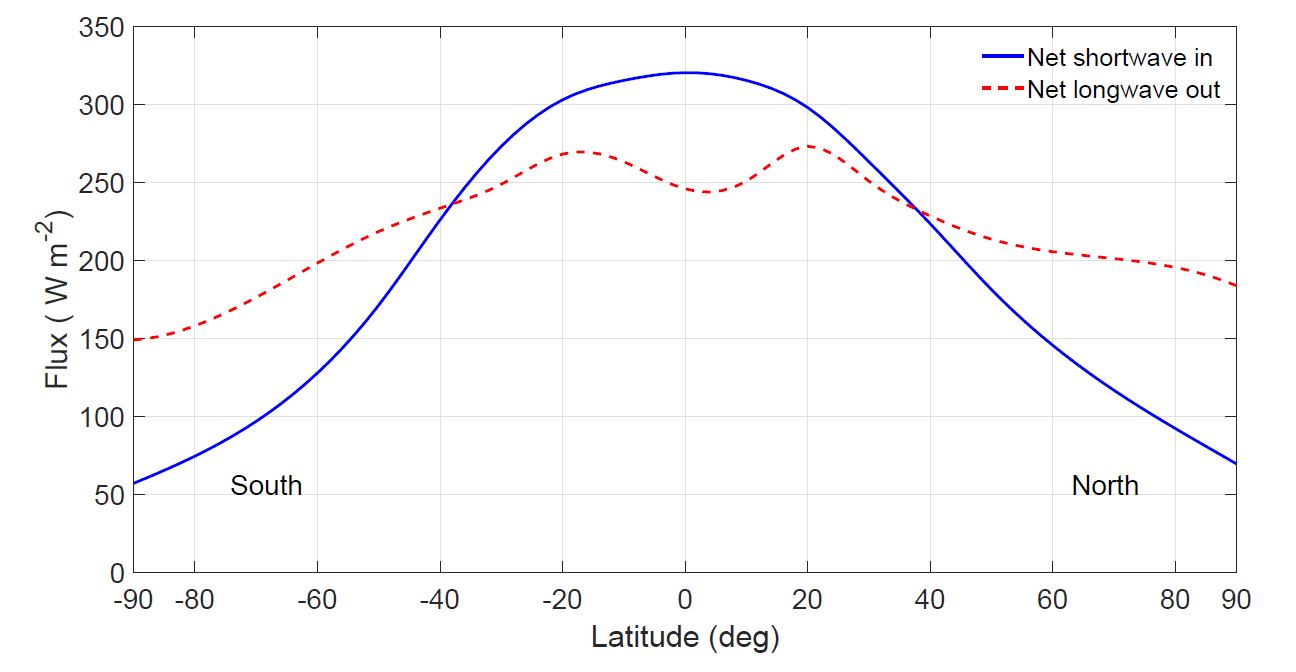Infrared Forcing by Greenhouse Gases
Infrared Forcing by Greenhouse Gases
W. A. van Wijngaarden¹ and W. Happer ²
¹Department of Physics and Astronomy, York University, Canada
²Department of Physics, Princeton University, USA
June 18, 2019
A shortened version of this important paper has been published on the arXiv preprint server hosted by Cornell University. The full version is provided here for the first time.
Download the full paper here: Infrared Forcing by Greenhouse Gases 2019 Revised 3 7 2022
Abstract
We review how the atmospheric temperatures and the concentrations of Earth’s five most important, naturally-occurring greenhouse gases, H₂O, CO₂, O₃, N₂O and CH₄ control the cloud-free, thermal radiative fluxes from the Earth to outer space. Computations based on the line intensities HITRAN data base alone, with no absorption continuums, are used to evaluate fluxes and intensities for greenhouse-gas concentrations similar to those of the year 2019. Calculated top-of-the atmosphere spectral intensities are in excellent quantitative agreement with satellite measurements at various latitudes. Also calculated are per-molecule forcings in a hypothetical, optically thin atmosphere, where there is negligible saturation of the absorption bands, or interference of one type of greenhouse gas with others. Then the per-molecule forcings are of order 10−²² W for H₂O, CO₂, O₃, N₂O and CH₄. For current atmospheric concentrations, the per-molecule forcings of the abundant greenhouse gases H₂O and CO₂ are suppressed by four orders of magnitude from optically-thin values because of saturation of the strong absorption bands and interference from other greenhouse gases. The forcings of the less abundant greenhouse gases, O₃, N₂O and CH₄, are also suppressed, but much less so. For current concentrations, the per-molecule forcings are two to three orders of magnitude greater for O₃, N₂O and CH₄, than those of H₂O or CO₂. Doubling the current concentrations of CO₂, N₂O or CH₄ only increases the forcings by a few per cent.
Introduction
Greenhouse warming of Earth’s surface and lower atmosphere is driven by radiative forcing, F , the difference between the flux of thermal radiant energy from a black surface through a hypothetical, transparent atmosphere, and the flux through an atmosphere with greenhouse gases, particulates and clouds, but with the same surface temperature[1]. Radiative forcing is often specified in units of watts per square meter (W m−²). Forcing depends on the altitude, z, and on how the temperature and greenhouse-gas concentrations vary with altitude. The radiative heating rate, R, of the atmosphere is equal to the rate of change of the forcing with altitude, R = dF/dz, and can be specified in units of W m−² km−¹. Over most of the atmosphere, R < 0, so thermal infrared radiation is a cooling mechanism that transfers absorbed solar energy back to space.
This paper has been written for readers with a strong background in quantitative sciences, who know little about radiation transfer in Earth’s atmosphere. So we include material that is common knowledge to a small number of experts, but little known to the larger scientific community.

Figure 1: The continuous blue curve is the yearly average of incoming short-wave solar flux (net visible, near infrared and ultraviolet) absorbed by the Earth. The dashed red curve is the yearly average of the outgoing thermal flux (net longwave infrared) radiated to space by the Earth. Excess solar energy absorbed in the tropics is transported to the poles by mass flow in the atmosphere and oceans. The data is from satellite observations[2]. Adapted from PhysicalGeography.net [3].
This paper is focused on the dashed red curve of Fig. 1, the emission of thermal radiation to space. This is the aspect of radiation balance that is most directly affected by changes in the concentration of greenhouse gases. We discuss model atmospheres with average properties similar to that of Earth in the year 2019. We mainly consider “instantaneous” forcing changes that result when the concentration of one or more of the greenhouse gases changes, but all other atmospheric conditions remain fixed. Except for a brief discussion of temperature adjustments of the atmosphere to restore hypothetical radiation equilibrium[5], we do not discuss the many other feedbacks that contribute to the change of atmospheric properties. Important examples are changes in cloud cover and changes in the circulation patterns of the atmosphere and oceans. Discussions of these important topics can be found in papers by Schwartz[6, 7], Etminan et al.[8], Trenberth and Fasulo[9], Lindzen et al.[10], Myhre al.,[11, 12], Collins et al.[13], and Harde[14].
The concentrations of the major greenhouse gases are so large in the year 2019, that each gas interferes with its own radiative transfer and that of other greenhouse gases. The relative potencies of greenhouse gases are most clearly defined for a hypothetical, optically-thin limit, discussed in the final sections of this paper, when the radiative forcing of each greenhouse gas is proportional to its column density.
Download the full paper here: Infrared Forcing by Greenhouse Gases 2019 Revised 3 7 2022
